An EMF (electromagnetic field) meter is a device used to measure electromagnetic radiation in a given area. EMF meters are used to detect and measure the strength of electromagnetic fields emitted by various sources, such as electrical appliances, power lines, wireless devices, and other electronic equipment.
EMF meters are commonly used in scientific research, industrial and commercial settings, as well as in residential areas to assess potential health risks associated with prolonged exposure to high levels of electromagnetic radiation. EMF meters can also be used by individuals who are concerned about their personal exposure to electromagnetic fields, especially those who suffer from electromagnetic hypersensitivity (EHS).
In one of my previous videos, I described a way of making a very sensitive device like this, but it requires a lot of experimental setup.
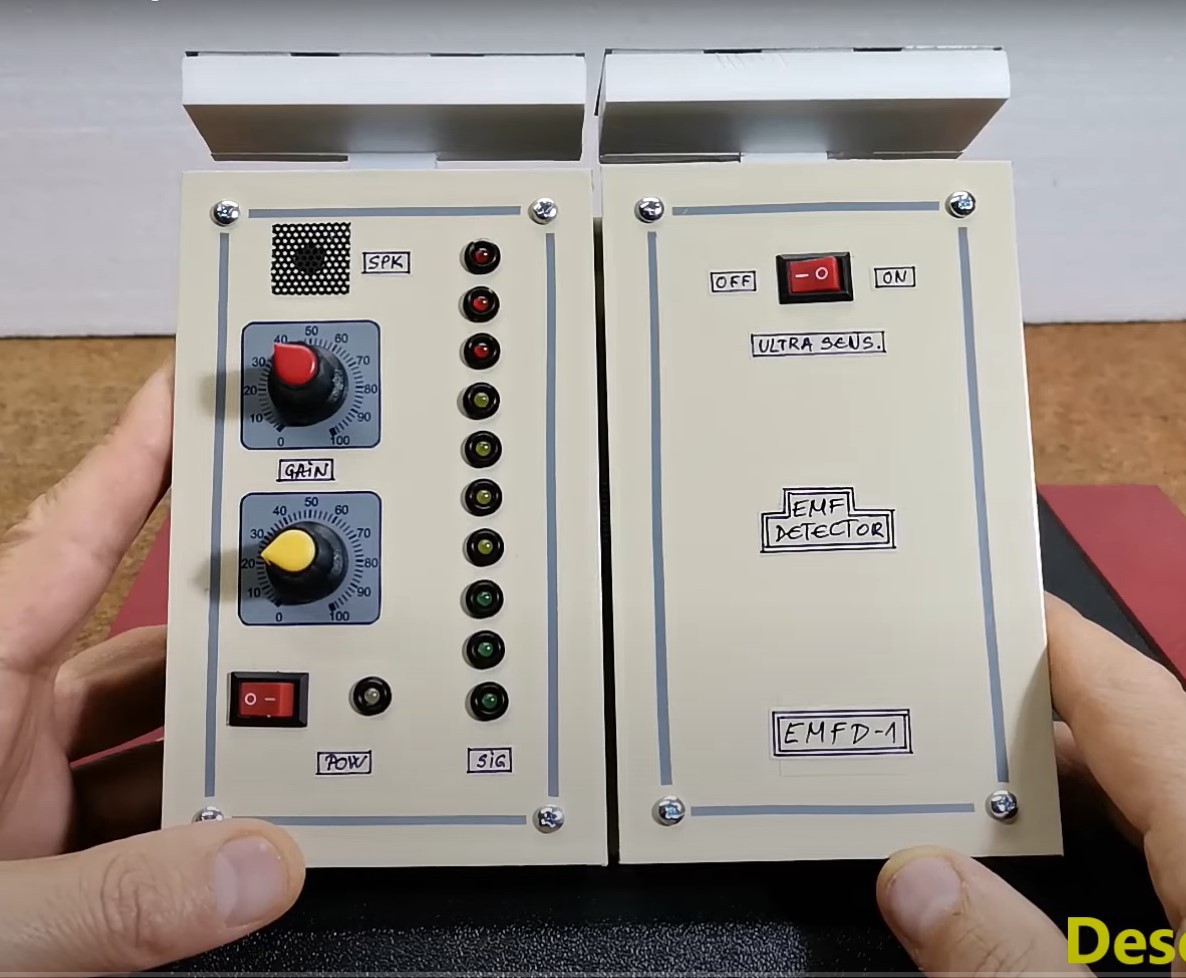
The emf detector described in this video has a minimal number of components, which means that it is simple to make, and does not require any tuning. It works great right from the first power on. Due to the simplicity, the sensitivity is not extremely high as in the previous case, but it is still enough to detect a power cable in the wall. It also has a large clearly legible progress bar, as well as the value of the field expressed in a relative number.
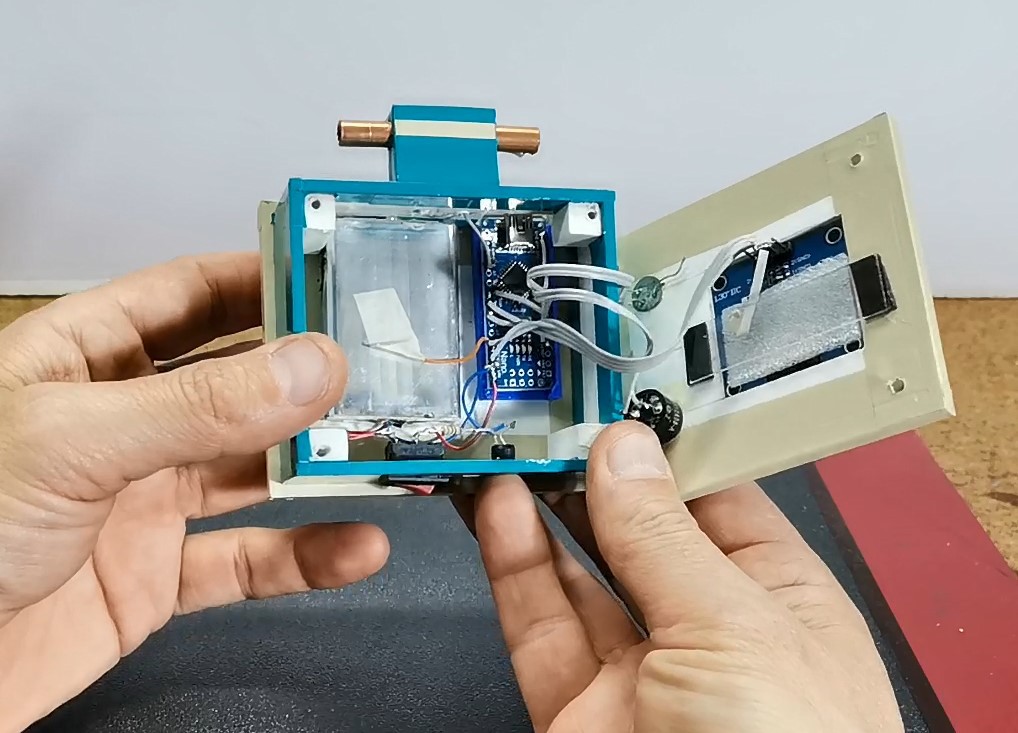
As I mentioned before, the device is very simple to build and consists of several components:
- Arduino Nano Microcontroller
- SH1106(or SSD1306) Oled display
- and Buzzer
An ordinary short wire can be used for an antenna, or as in this particular case, a small piece of copper pipe.

After switching on, the logo appears first, and after a few seconds the main screen. Now we have to wait for a certain time until the value of the EMF field stabilizes around zero, if there is no source of radiation near the device.
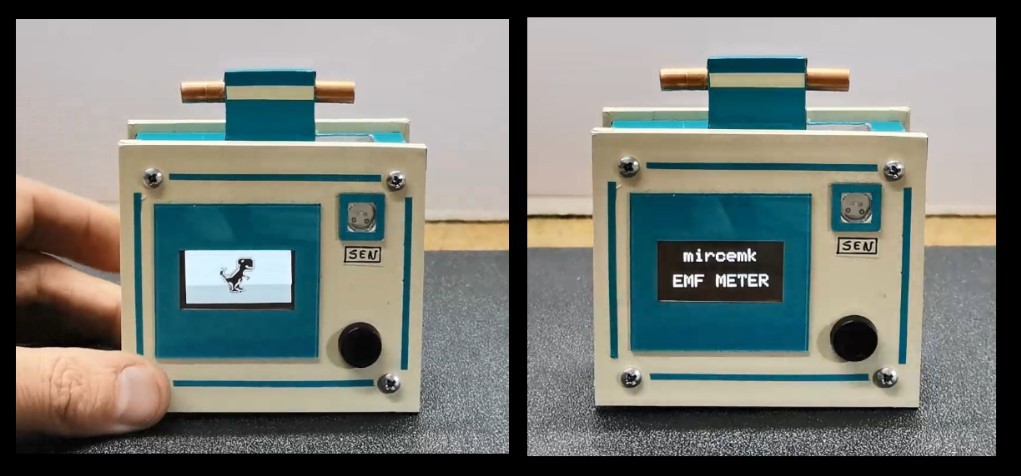
In addition to visual, the EMF detector also has a sound signal with three different frequencies 100, 500 and 1000 Hertz proportional to the strength of the field. The thresholds at which the frequency changes are defined in the code.
This device is also sensitive to static electricity, which means it can also be used as an Electroscope.

In addition to visual, the EMF detector also has a sound signal with three different frequencies 100, 500 and 1000 Hertz proportional to the strength of the field. The thresholds at which the frequency changes are defined in the code.
This device is also sensitive to static electricity, which means it can also be used as an Electroscope.

 mircemk
mircemk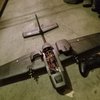
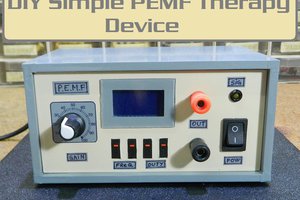
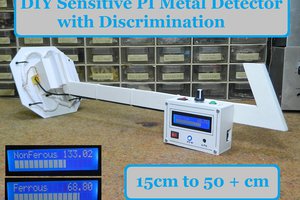
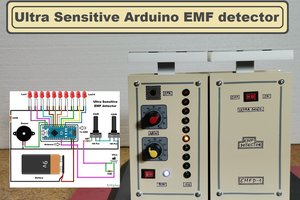

Would it be possible/practical to use this device to search hotels/rooms for hidden cameras&/audio recording devices?